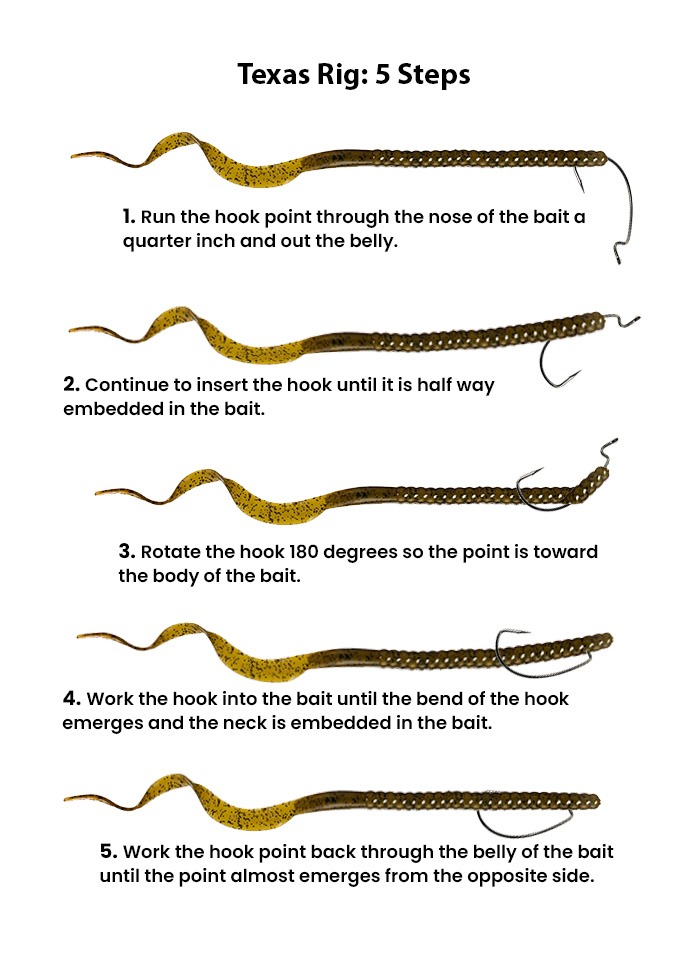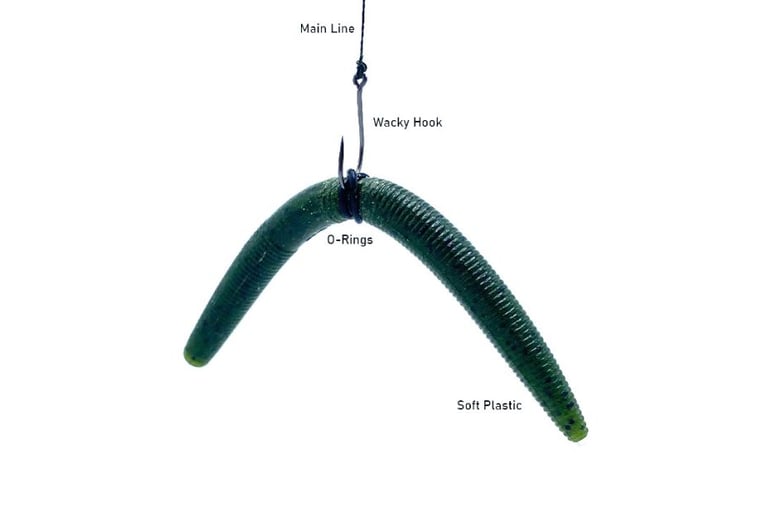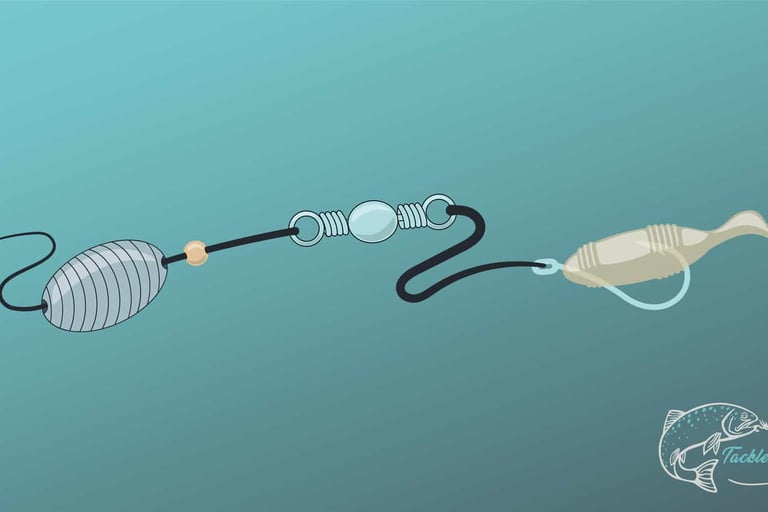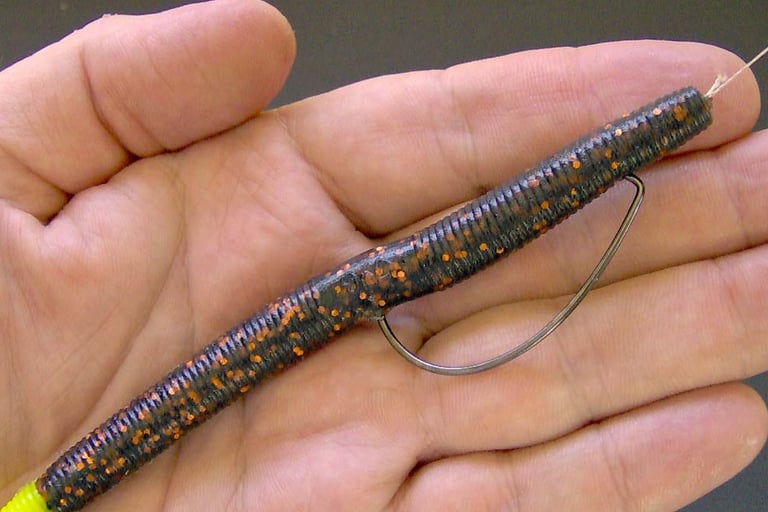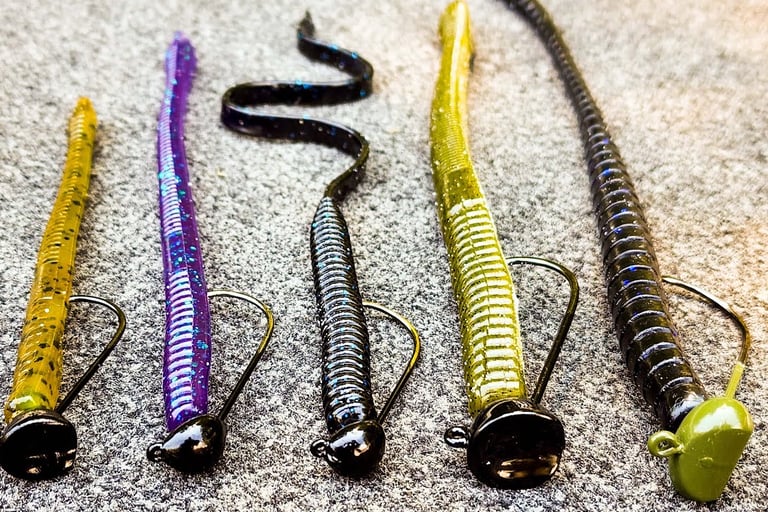🎣 5 Popular Ways to Rig a Soft Plastic Worm: Flat Worms & Stick Worms Explained
If you're new to bass fishing or just getting into custom baits, knowing how to rig a soft plastic worm the right way can make all the difference. In this guide, we'll break down the most effective ways to rig two of the most popular soft plastics - Flat Worms and Stick Worms - and when to use each one.
🪱 What’s the Difference Between a Flat Worm and a Stick Worm?
Before we jump into rigging methods, it helps to understand how these worms fish differently:
Flat Worm: Long and slim - great for floating or subtle movement presentations.
Stick Worm: Thicker, heavier, and fall naturally - perfect for weightless or slow fall styles like the wacky rig.
At Belton Baits, we offer custom-made versions of both, with hand-selected colors and premium plastisol for better durability and performance in Central Texas waters.
🧷 1. Texas Rig (Stick Worm or Flat Worm)
The Texas rig is a classic, especially in weedy or rocky cover.
Best For:
Fishing around brush or thick grass
Getting a natural fall with a weedless presentation
How To Rig It:
Insert an offset worm hook into the nose of the worm
Exit about ¼" down the body
Rotate and tuck the hook point back into the body for a weedless setup
Optionally, you can add a bullet weight. Be sure to run your line through the bullet weight before tying on the hook.
✅ Pro Tip: Use lighter weights (1/8–1/4 oz) in open water or for a slower fall. Go heavier (3/8–1/2 oz or more) to punch through grass, brush, or current.
🪝 2. Wacky Rig (Best for Stick Worms)
The wacky rig is a finesse setup that gives a subtle flutter on both ends of the worm as it sinks.
Best For:
Clear water
Suspended or finicky bass
Open water around structure
How To Rig It:
Hook a Stick Worm right through the middle
Use an o-ring if you want to preserve bait life
Let it fall naturally - no weight needed
Use a weighted wacky rig hook for depths below 10+ feet, to battle wind or current, target faster or aggressive bites, or skip under cover easier.
✅ Pro Tip: The real power of a wacky rig is in the fall - so don’t overwork it. Cast near structure (like docks, grass lines, or rock edges) and let the bait sink on a slack line. Most bites happen as the worm slowly flutters down. After it hits bottom, give it a few gentle twitches, then let it sit again. Less is more - bass often strike when you’re doing almost nothing.
🪛 3. Carolina Rig (Both Worm Types)
The Carolina rig allows your worm to float and trail behind a heavy weight.
Best For:
Deep water
Dragging along the bottom
Covering ground
How To Rig It:
Thread a bullet weight, bead (optional), and swivel onto your main line
Tie on a 12-18" leader with a hook and your worm
✅ Pro Tip: Unlike a Texas rig, a Carolina rig is meant to be dragged slowly along the bottom. The weight stirs up the bottom while your bait trails behind, moving naturally. This mimics a crawfish or baitfish scurrying across the lake bed. Keep your rod low and pull gently to feel changes in bottom composition or subtle bites.
🎯 4. Weightless Rig (Stick Worms Shine Here)
Stick Worms have a perfect fall rate on their own, so rigging them weightless is highly effective.
Best For:
Shallow flats
Skipping under docks
Finesse presentations
How To Rig It:
Use a 3/0 or 4/0 EWG hook
Rig it Texas-style but without a weight
Let it fall naturally and twitch it gently on retrieve
✅Pro Tip: A weightless Texas rig is perfect for targeting shallow, clear, or heavily pressured water. It allows your soft plastic to fall slowly and naturally - ideal for spooky or inactive bass. Cast near cover like laydowns, grass edges, or shade lines, then let it fall on a slack line. Give it subtle twitches to mimic a dying baitfish or worm, and be ready - bites are often light.
🐍 5. Shaky Head (Mostly for Flat Worms)
The shaky head is a finesse setup that keeps the worm’s nose down and tail up — ideal for pressured bass.
Best For:
Cold fronts
Spawning beds
Clean bottom structure
How To Rig It:
Use a shaky head jig hook
Screw or pin the worm to the jig head
Drag or shake slowly along the bottom
✅ Pro Tip: After the bait hits bottom, give it small shakes and then let it sit completely still for 5–10 seconds - sometimes longer. Bass will often hit during that pause when the worm is just standing up and barely moving. Patience is key.
🧠 Final Thoughts: Match the Rig to the Bite
Both Stick Worms and Flat Worms are versatile and deadly when paired with the right rig. At Belton Baits, we hand-make custom colors that match Belton Lake, Stillhouse Hollow, and other Central Texas waters. Whether you're fishing clear water, heavy grass, or deep structure, there's a rig - and a worm - that’ll get the job done.
Ready to fish smarter?
Explore our Stick and Flat Worms or message us for a custom color that fits your favorite rig style.
🪱 Stick Worms
🪱 Flat Worms
